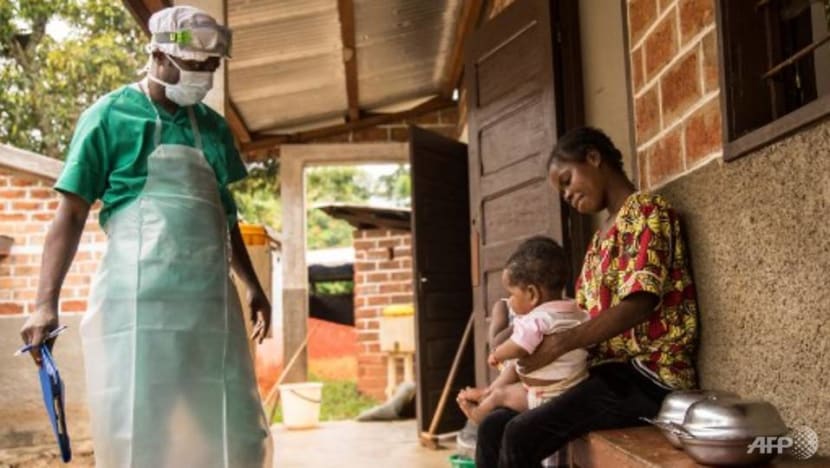First monkeypox case in Singapore: What you need to know about the disease

A child affected by monkeypox receiving treatment at a Doctors Without Borders centre in the Central African Republic on Oct 18, 2018. (Photo: AFP)
SINGAPORE: Authorities have confirmed Singapore's first case of monkeypox infection, imported by a 38-year-old Nigerian who arrived on Apr 28. The patient, who may have contracted the rare disease from eating bush meat while in Nigeria, tested positive for the virus on May 8. He is in stable condition in an isolation ward at the National Centre for Infectious Diseases (NCID).
People who were in close contact with him have been put in quarantine although they have had no symptoms.

READ: Singapore confirms first case of monkeypox, patient's close contacts quarantined
Here are some things you need to know about the disease.
How is monkeypox spread, and should we be worried about an outbreak?
Monkeypox is a rare disease caused by a virus that is transmitted to humans from animals such as rodents and monkeys.
According to the World Health Organization (WHO), this happens when a person comes in close contact with the blood, bodily fluids or lesions of infected animals.

The virus can also be contracted by eating the inadequately cooked meat of infected animals.
However, the virus does not spread easily between humans. An infection can result from close contact with infected respiratory tract secretions, skin lesions of an infected person or objects recently contaminated by patient fluids or lesion materials.
It also requires prolonged face-to-face contact.
WHO notes that there is currently no evidence that person-to-person transmission can sustain infections in the human population on its own.
MOH said the risk of monkeypox infection in Singapore remains low.
What are the symptoms?
Infected persons may experience the following initial symptoms: Fever, headache, swelling of the lymph nodes, back pain, muscle ache and lack of energy.
Rashes appear within one to three days after the onset of fever. This would usually begin in the face and eventually spread to other parts of the body, commonly in the hands and soles of the feet.

In severe cases, the virus can also cause serious complications such as pneumonia, sepsis, brain inflammation and loss of vision due to eye infection.
Symptoms usually last 14 to 21 days.
How dangerous is it?
Most deaths occur in younger age groups, said WHO. Mortality rates of 1 to 10 per cent have been reported during outbreaks.
How is monkeypox diagnosed and treated?
Monkeypox can only be diagnosed in specialised laboratories with a number of different tests, said WHO.
Unfortunately, there are currently no specific treatments or vaccines available for monkeypox infection. However, the smallpox vaccine was proven to be 85 per cent effective in preventing monkeypox.
What countries have reported monkeypox outbreaks?
Monkeypox was first identified in humans in 1970 in the Democratic Republic of Congo and occurs mainly in parts of central and western Africa, near tropical rainforests, said WHO.
READ: Britain reports two separate cases of rare monkeypox infection
The first time human monkeypox was reported outside of Africa was in 2003, when the United States recorded 37 confirmed cases, according to the US Centers for Disease Control (CDC). The US outbreak was spread across five states.
It was determined that the virus was introduced to the US via a shipment of animals from Ghana that was imported to Texas.
The US CDC also lists three cases in the United Kingdom and one in Israel, both in 2018.














